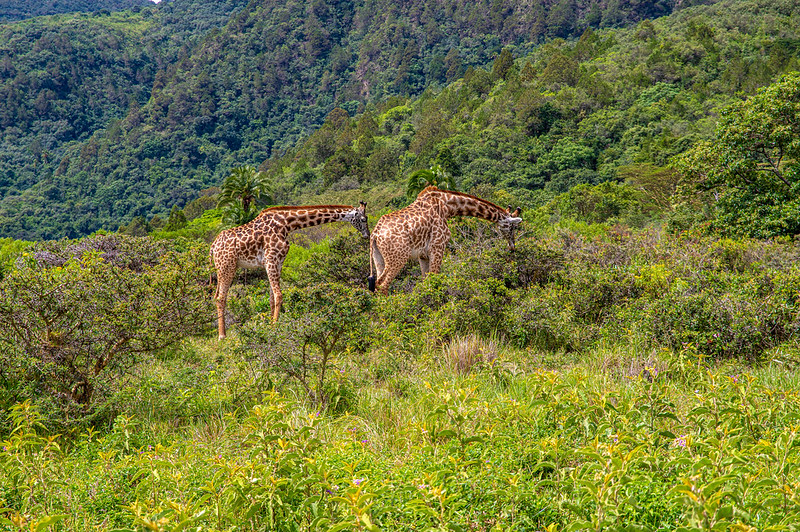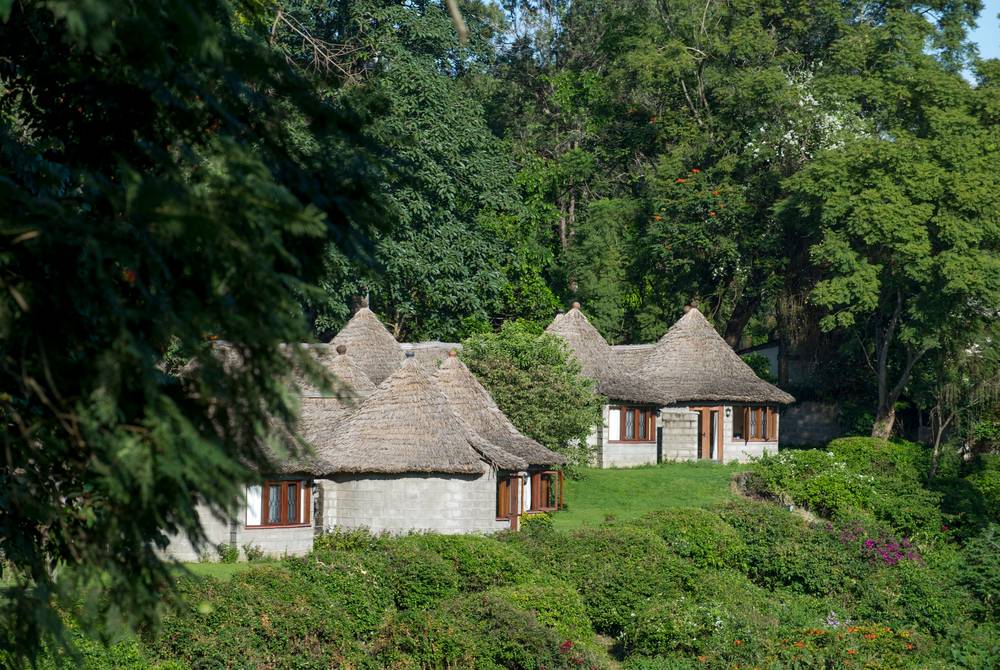Arusha National Park - Tanzania
Situated a brief drive from Arusha Town is the national park that shares its name. Arusha National Park is the most accessible national park in Tanzania’s Northern Circuit, making it an ideal destination for a day trip or as the initial or final stop on an extended journey. Covering 552 square kilometers, Arusha National Park is a compact reserve rich in attractions.
Arusha National Park is partitioned among three districts: Momella Lakes, Mount Meru, and the Ngurdoto Crater. Seasonally, one can observe thousands of flamingos in Momella Lakes, as they move between Lake Manyara and this location. Arusha National Park features a diverse array of landforms, including open grassland, acacia scrubland, rainforest, and alpine conditions in the highest elevations of Mt. Meru.
Arusha National Park boasts a variety of animals, including herbivores like elephants, hippos, buffalo, zebra, and sporadically, wildebeest. It also offers opportunities for physical activity with walking safaris and canoe safaris within the park. The National Park hosts the greatest number of giraffes globally, rendering it an excellent destination for enthusiasts of these elegant, long-necked creatures.
Arusha National Park is the nearest park to the town of the same name. It is a favored location for day trip tourists departing from the town of Arusha and for extended northern circuit safaris.
Arusha National Park is a captivating destination for both safari enthusiasts and climbers, situated at the base of Mt Kilimanjaro’s smaller counterpart, Mt Meru.
Due to its proximity to the city, predators are rarely observed. Lions are relocated, whereas leopards may readily conceal themselves in the underbrush. Nonetheless, these variables render Arusha National Park a formidable contender for inclusion in your ‘top five national parks bucket list.’

Walking Safari in Arusha National Park & The Colobus Monkey
With a lack of predatory species like lions, Arusha National Park is ideally suited for an exhilarating walking safari with a ranger. Strolling unencumbered amidst the fauna of Tanzania provides an exceptionally distinctive experience. You will traverse the base of Mt. Meru, enveloped by verdant forests, lakes, waterfalls, and a substantial population of giraffes. A walking safari provides an exceptional opportunity for intimate encounters with wildlife. The Colobus monkey is a prominent species observed at Arusha National Park, frequently seen hanging among the trees.
Mount Meru
Mount Meru is an active yet dormant volcano that constitutes the focal point of Arusha National Park. It is renowned for its towering cliffs and verdant environs at the base. Mount Meru is the second tallest mountain in Tanzania. Although it may not reach the height of its larger counterpart, it demands greater technical proficiency from its climber, presenting a genuine challenge. The mountain is infrequently ascended, providing a distinctly distinctive and more secluded experience. The ascent can be completed in a three-day or a four-day itinerary.
When is the best time to visit Arusha National Park?
The best time to visit Arusha National Park is contingent upon individual tastes. The timing of your visit can significantly influence your animal experience. The park is recognized as an excellent location for birdwatching, particularly during the periods of November to December and March to May. This is the period when migrating birds, including flamingos, arrive.
Nonetheless, if you like to observe mammals, the optimal period for visitation is during the dry season, from June to October. This is the driest season of the year, facilitating their visibility in the typically dense, verdant woodlands. Due to the scarcity of water, there is a significant likelihood of observing wildlife around freshwater sources. The arid months, specifically January and February, represent the optimal time to ascend Mt. Meru.
Wildlife in Arusha National Park
A concise enumeration of the ‘most sought-after’ fauna in Arusha National Park together with the likelihood of encountering them. Certain creatures are predominantly exclusive to specific parks or are found only in particular regions. It is essential to communicate your wildlife choices to optimize your opportunities for observing your preferred animal.
The enumerated figures provide an approximation of the frequency with which we have personally observed these species during our travels. Certain creatures have been observed consistently during each visit. Nonetheless, it is not a zoo, hence there remains a possibility of overlooking an animal.
Climate in Arusha National Park
Arusha National Park typically experiences a temperate climate characterized by refreshing mornings and nights, alongside warm daytime temperatures. The national park’s proximity to Mt. Meru significantly affects its climate, leading to erratic weather patterns and increased precipitation near the slopes compared to the surrounding regions. The temperature variations can be significantly pronounced. It is strongly recommended to pack a thick sweater for early morning safaris, as the average nighttime temperature is approximately 10 degrees. Diurnal temperatures are typically around 20 degrees, contingent upon the season and altitude.
Where to stay in Arusha National Park

Accommodation in Arusha, Presented below are many of our preferred lodgings in or near Arusha National Park. The majority of individuals chose to reside outside the national park due to the abundance of accommodations offered across several pricing tiers, ranging from economical to opulent. The expense of lodging within the park is somewhat higher; but, if you can allocate more funds, several exceptional possibilities are accessible within the national park.
All lodges are carefully evaluated by us to ensure compliance with our requirements. This approach ensures the optimal safari experience. We evaluate the resorts based on location efficiency, wildlife experience, accommodation quality, service, and the safari aspect. A suitable lodge exists for every budget and every category of traveler.
